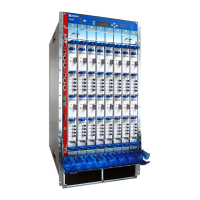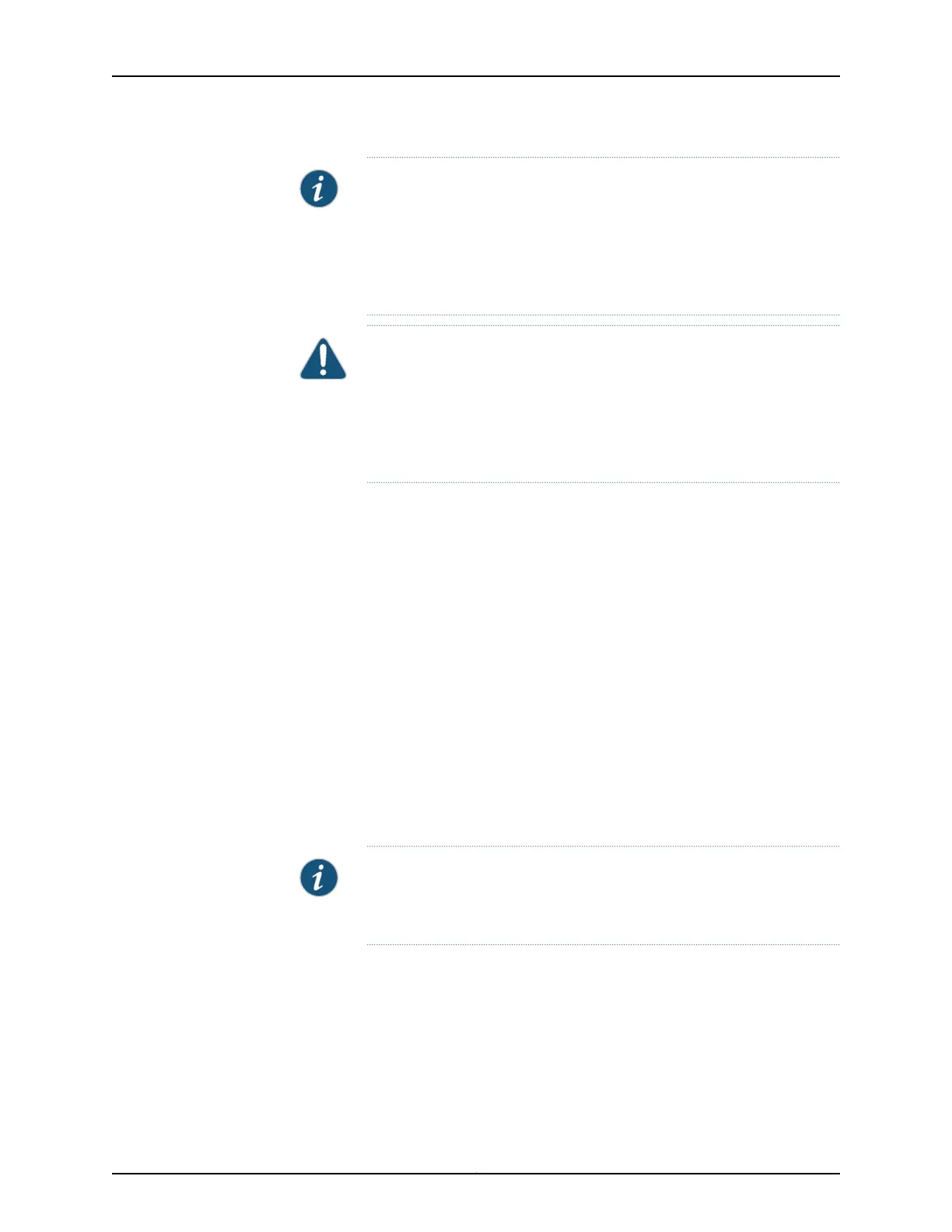NOTE: INPUT 0 and INPUT 1 on the three-input 240-A DC power supply
in slot PEM0 must be powered by dedicated power feeds derived from
feed A, and INPUT 0 and INPUT 1 on the three-input240-A DC power supply
in slot PEM1 must be poweredby dedicated powerfeeds derivedfrom feed
B. This configuration provides the commonly deployed A/B feed
redundancy for the system.
CAUTION: You must ensure that power connections maintain the proper
polarity. The power source cables might be labeled (+) and (–) to indicate
their polarity. There is no standard color coding for DC power cables. The
color coding used by the external DC power source at your site determines
the color coding for the leads on the power cables that attach to the
terminal studs on each power supply.
10. Loosen the captive screws on the cable restraints on the right edge of the power
supply faceplate.
11. Route the positive and negative DC power cables through the top and bottom of each
cable restraint.
12. Tighten the cable restraint captive screws to hold the power cables in place.
13. Verify that the power cabling is correct, that the cables are not touching or blocking
access to router components, and that they do not drape where people could trip on
them.
14. Replace the clear plastic cover over the terminal studs on the faceplate.
15. Switch the circuit breakers on the power supply to the on position (|).
NOTE: If you have only one power supply, or if the router is completely
powered off when you power on the power supply, the Routing Engine
boots as the power supply completes its startup sequence.
16. Check the LEDs on the power supply faceplate. If the power supply is correctly installed
and is functioning properly, the DC OK LED lights steadily, and the CB ON LED blinks
momentarily, then lights steadily.
Copyright © 2017, Juniper Networks, Inc.354
T640 Core Router Hardware Guide

